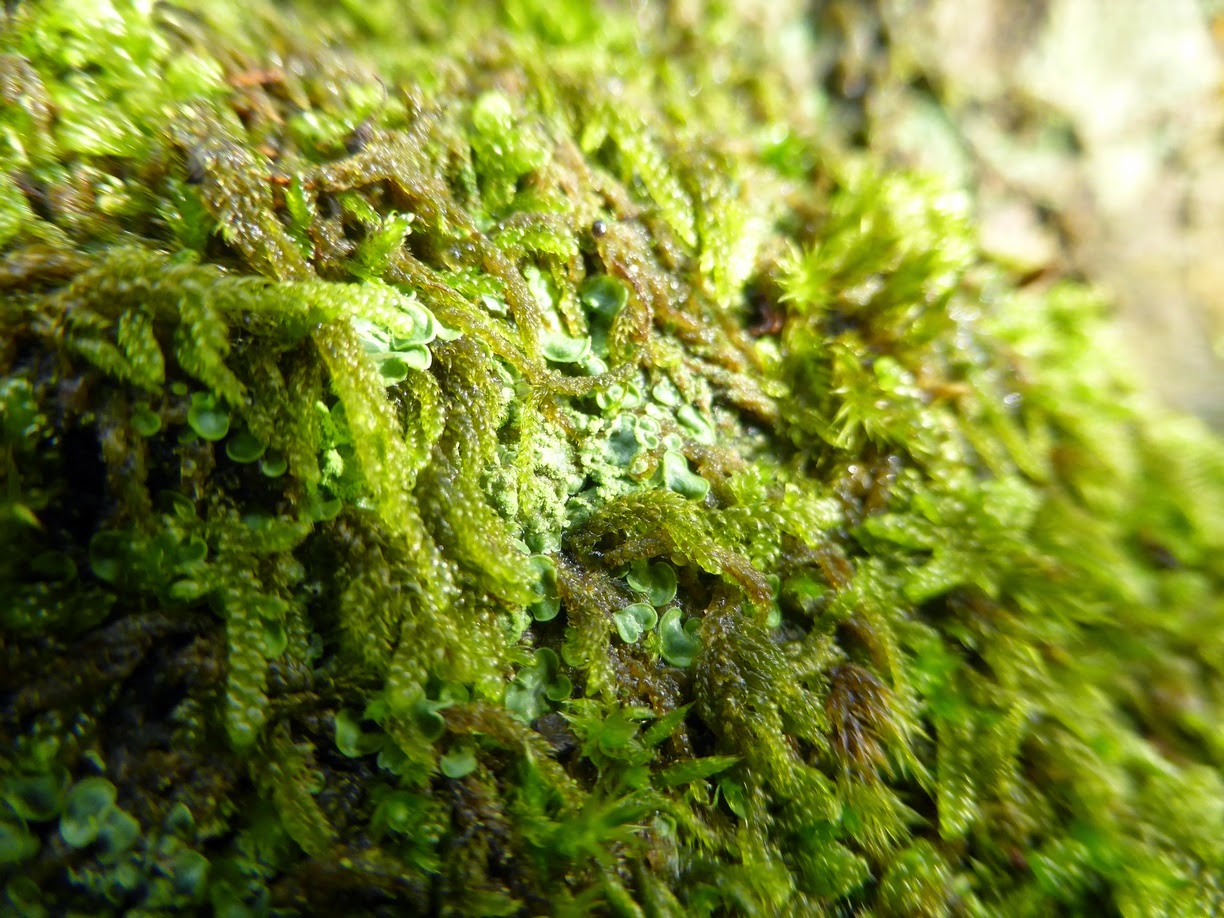 |
| This shows the way I had come |
I was returning from Malham Tarn on Tuesday morning the scenic way - along Henside, to Sannet Hall, when the sun came out. (Next I would descend to Stainforth.) This picture is looking back from Sannet Hall towards Henside
The grass was vivid lime green - making for dramatic picutres
and so was the Klebsormidium (filamentous alga) splurging all over the wall.
You can see it can't you? On the right, and on the wooden post.
Klebsormidium grows on acid rocks and wood.
The stones in the wall just here are mostly made of Greywacke a 450 million year old Silurian rock (that I would call slate if I hadn't been told better) - that lies below the 350 Million year old carboniferous limestone.
(Digressing: (Greywacke is a grey sandstone (hence the name grey) with particles of sand of various sizes and also of clay in it. It is generally characterized by its hardness, dark color, and poorly sorted angular grains of quartz, feldspar, and small rock fragments or lithic fragmentsset in a compact, clay-fine matrix. The sea where it formed may have had turbidity currents and been moving to have such a mixture of particle sizes. I like this description here even if it was 1833)Anyway, it is acid, and with the high rainfall we get round here, and it being a north facing side of the wall, the alga is doing really well. I suspect the mild October and November has allowed it to continue growing.
This alga has spread relatively recently in Britain - but I have never seen quite so much as on this wall.
It is increasing because of the background nitrogen oxides (and maybe ammonia) in the air, from intensive farming, cow muck, car exhaust etc.
It is increasing because of the background nitrogen oxides (and maybe ammonia) in the air, from intensive farming, cow muck, car exhaust etc.
The adjacent farm may have had a slight effect - but the alga extended a third of a mile or so to the south towards Stainforth (as far as the greywacke stones extended) so I think it is mainly here due to the exposed position of the wall. (Or it could also be as far as the much spreader was able to drive...) I just don't know.
 |
| The pollarded trees look dramatic too. |
 |
| This was a bright yellow green lichen - but I don't think it was Rhizocarpon geographicum - more like a white lichen turned yellow green by an alga .. I must try and find out about this. Here is a link to a website about a prototype algal farm on a flyover over a motorway in Switzerland |








































